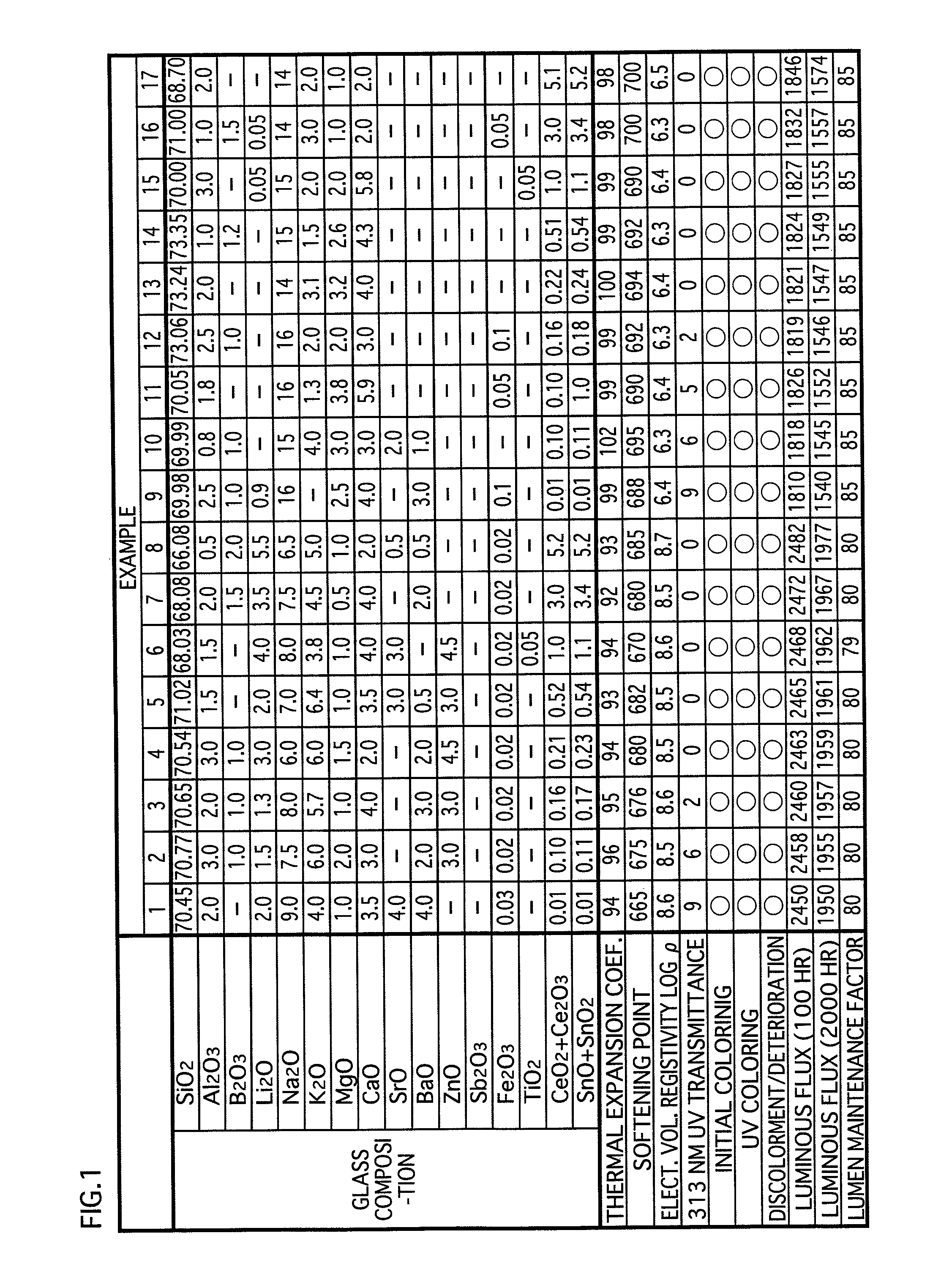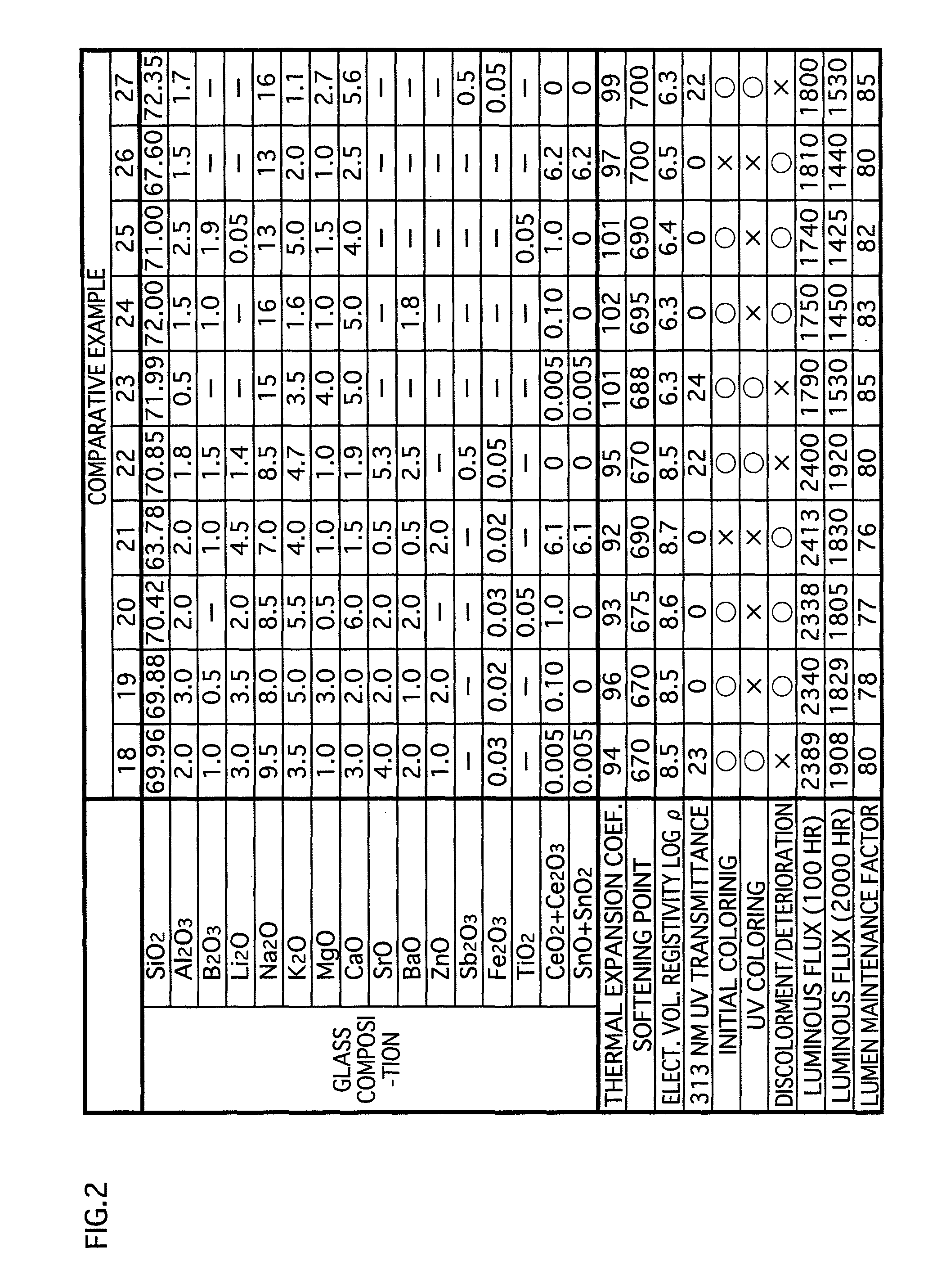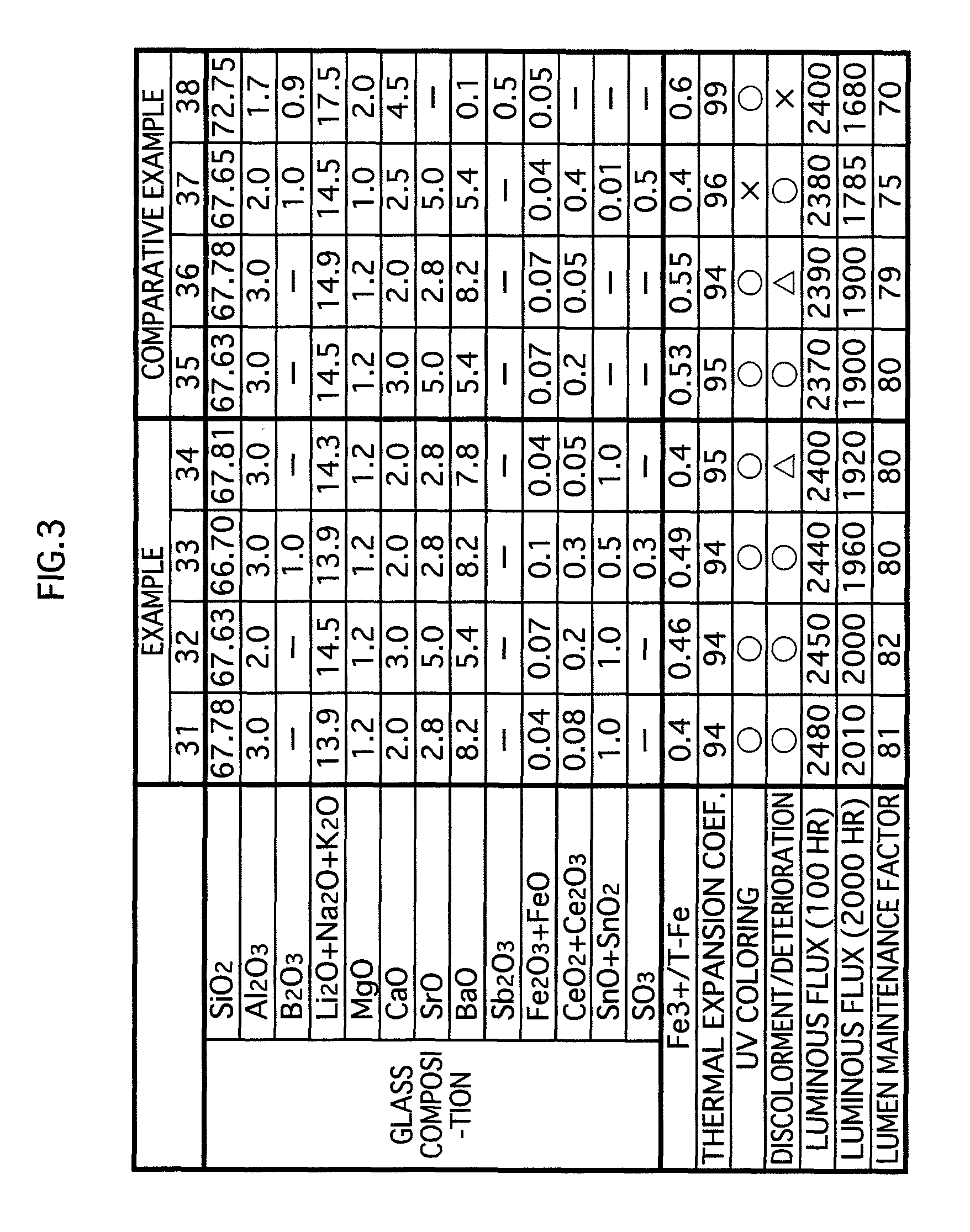Glass composition for lamp, glass part for lamp, and process for producing lamp or glass composition for lamp
a technology for glass components and lamps, which is applied in the direction of glass pressing apparatus, discharge tube/lamp details, gas-filled discharge tubes, etc., can solve the problems of mechanical strength deterioration of resin components of luminaires and such as lighted objects, discoloration and deterioration of materials, and conventional fluorescent lamps that do not sufficiently cut ultraviolet rays, etc., to suppress ultraviolet ray transmission, suppress initial coloring and ultraviolet ray coloring of glass, and sufficient ultraviolet ray screening
- Summary
- Abstract
- Description
- Claims
- Application Information
AI Technical Summary
Benefits of technology
Problems solved by technology
Method used
Image
Examples
Embodiment Construction
[0047]The following describes a glass composition for lamps, a glass part for lamps, a lamp, and a process for producing a glass composition for lamps that are in accordance with embodiments of the present invention, with reference to the attached drawings.
[0048](Description of Glass Composition for Lamps)
[0049]The glass composition in accordance with the embodiments of the present invention contains substances expressed in terms of oxides shown in examples 1-17 in FIG. 1 and examples 31-34 in FIG. 3. Note that the glass composition (hereinafter called simply “glass”) in accordance with the present invention is not limited to that of the examples 1-17 and the examples 31-34. However, for maintaining the favorable properties of the glass for lamps, it is preferable to substantially include the following expressed in terms of oxides: SiO2: 60-75 wt %; CeO2+Ce2O3: 0.01-5.2 wt %; SnO+SnO2: 0.01-5.2 wt %; Al2O3: 0.5-6 wt %; B2O3: 0-5 wt %; Li2O+Na2O+K2O: 13-20 wt %; MgO: 0.5-5 wt %; CaO:...
PUM
| Property | Measurement | Unit |
|---|---|---|
| wavelength | aaaaa | aaaaa |
| temperatures | aaaaa | aaaaa |
| wt % | aaaaa | aaaaa |
Abstract
Description
Claims
Application Information
 Login to View More
Login to View More - R&D
- Intellectual Property
- Life Sciences
- Materials
- Tech Scout
- Unparalleled Data Quality
- Higher Quality Content
- 60% Fewer Hallucinations
Browse by: Latest US Patents, China's latest patents, Technical Efficacy Thesaurus, Application Domain, Technology Topic, Popular Technical Reports.
© 2025 PatSnap. All rights reserved.Legal|Privacy policy|Modern Slavery Act Transparency Statement|Sitemap|About US| Contact US: help@patsnap.com



